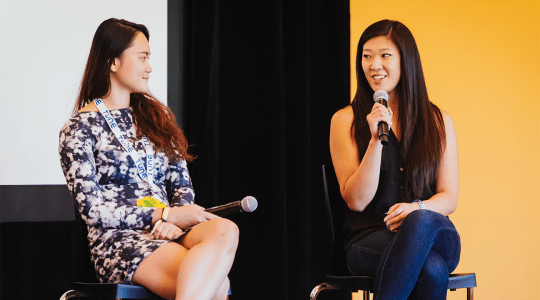If you’re running paid install campaigns without implementing ASO, you’re doing it wrong. Here are two simple scenarios. Read them and choose which one you would rather be a part of (HINT: it’s the second one).
Scenario 1: You give me a dollar, and I give you an apple.
Scenario 2: You give me a dollar, and I give you an apple, two bananas, a bag of chips, and some M&Ms.
Unless you live in a bizarro world where less is more, I’m assuming you picked Scenario 2. If you’re going to spend a dollar, you want to get every ounce of value you can out of it, right?
So I’ll say again: If you’re running paid install campaigns without implementing ASO, you’re doing it wrong. You’re not maximizing your ROI.
If you’ve already put together and started an ASO strategy, bravo, I’m sure you’re reaping the rewards. If you haven’t, stop all your paid ads right now. Seriously, turn them off. Here’s why you’ll be thanking me later.
Your New Favorite ROI
Now don’t take that the wrong way, I’m not trying to start a revolt against paid installs. In fact, paid installs are great, and can be used in a number of very valuable ways. But here at MobileDevHQ, we care about the app marketer, and we want to help make sure you get everything you can out of all your marketing campaigns – both paid and organic.
In case you haven’t heard, the average cost per install (CPI) is rising, making it even more important to make sure you get the highest possible return on your investment. Normally, calculating ROI is fairly simple.
The high level, most basic approach is to calculate the lifetime value (LTV) of your average customer, multiply it by the number of new users you expect, then subtract how much it cost to acquire that user, also multiplied by the number of new users.
How does ASO play into a new ROI formula? It includes not only the users you acquire through direct paid channels, but also the additional ones you acquire through organic channels. Paid installs not only provide direct downloads, but they also improve your ranking for search terms and your ranking in the Top Charts. They do this by increasing both your total downloads and your download velocity. Your improved ranking will then lead to more organic downloads – which the new formula accounts for.

Implementing ASO is hugely important because it makes sure that all the factors are in place to get the most out the bump in the organic downloads which stem from paid campaigns. Let’s look at two examples of how this could play out.
Marketer A
Marketer A has the app ‘Foobar’. He is planning on running a paid campaign soon and approaches his bosses with a projected ROI. He knows that the LTV of one of their customers is $3, and that their CPI is $1.50. Their return for each download will therefore be $1.50. Foobar is a football related app and they are going to run the ad over the Super Bowl weekend, and they expect to acquire 10,000 downloads over those two days.
His ROI is $15,000 (see image below for specific calculations) and his bosses approve and give him the green light to start running ads.
Unfortunately, Marketer A is inexperienced. He not only did not account for the increase in organic downloads in his ROI calculations, but he has not implemented an ASO strategy and is still using random, non-optimized keywords. He also hasn’t optimized his title, description, screenshots, or paid attention to his ratings and reviews.
I think this video properly wraps up our feelings towards Marketer A.
Now let’s see how the brilliant Marketer B would do it.
Marketer B
Strangely enough, Marketer B lives in a parallel universe where she is actually in the same role, working for the same app as Marketer A. Her app has the same LTV, CPI, and is expecting the same number of paid downloads over the same period of time.
However, there is one major difference: Marketer B has done her research and implemented a thorough and thought out ASO strategy. She has picked targeted keywords, put the right ones in her title, and optimized the description and screenshots. Not only has she picked better keywords which will lead to more exposure and downloads, but she has also estimated the increase in downloads the app will receive from a better ranking, and factored that into her ROI. They currently receive 1,000 downloads per day, and according to her calculations, the ranking improvements for search terms and Top Charts will double their daily downloads for 10 days after the paid campaign is done.
How’d she get those numbers? She based her calculations off of paid campaigns they’ve run in the past. On average their rankings increase about 7 spots for search terms, and 5 spots in the Top Charts (this will be different for every app). Those ranking boosts have lasted about 6-10 days in the past and have also led to a 50% increase in organic downloads. BUT, this data is from before they implemented an ASO strategy. She now has targeted less difficult keywords, with higher search volume and more relevance. She changed her apps title to highlight the most important search terms, and her improved description and screenshots should lead to a higher conversion rate. Therefore, she believes that the app will rise 12 spots for it’s search terms and 10 spots in the Top Charts, which will lead to 100% increase in downloads that will last at least 10 days.
Now, when she calculates her ROI, she not only includes the direct downloads from the paid installs, but she also accounts for the residual effects of the increased search and Top Charts rankings. On top of the 10,000 direct downloads from paid installs, she now can add an additional 10,000 organic downloads, at no extra cost (the 10,000 extra comes from the additional 1,000 downloads a day for 10 days). This brings her ROI from $15,000 to $45,000. Although her downloads only double, the ROI actually triples because there is no marginal cost for the extra downloads.

The two main takeaways? First, although inevitably the increase in downloads from paid installs for Marketer A would improve his app’s rankings and therefore lead to more downloads, he did not include it in his projections. This not only will make it harder for him to get the campaign approved by his superiors, but it also won’t make him look as good in the end because he is not accounting for the extra downloads. Second, he did not use ASO to make sure that he was targeting the right keywords to get the most installs. This means that even if he had accounted for the residual downloads from improved rankings, they would not be as great as they could have been.
Two Final Scenarios
I’ll wrap this post up the same was I started – by presenting you with two scenarios to choose from. (Note: With the goal of being overly obvious in making the connection between the first scenario being what happened to Marketer A, and the second one being what happened to Marketer B, I will name them scenario A and B, instead of 1 and 2)
Scenario A: You run a marketing campaign, and in the end get a pat on the back for a respectable ROI and maybe a small bonus.
Scenario B: You run a marketing campaign, get a promotion, a huge bonus, and eventually become CEO of the company and President of The World (yes, in this scenario there is a president of the world).
It’s your call… If you’ve decided you want to become the best app marketer you can, sign up for a free account today and check out our tool.
Author
Becky is the Senior Content Marketing Manager at TUNE. Before TUNE, she handled content strategy and marketing communications at several tech startups in the Bay Area. Becky received her bachelor's degree in English from Wake Forest University. After a decade in San Francisco and Seattle, she has returned home to Charleston, SC, where you can find her strolling through Hampton Park with her pup and enjoying the simple things between adventures with friends and family.




Leave a Reply
You must be logged in to post a comment.